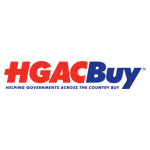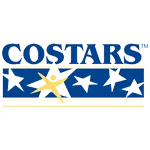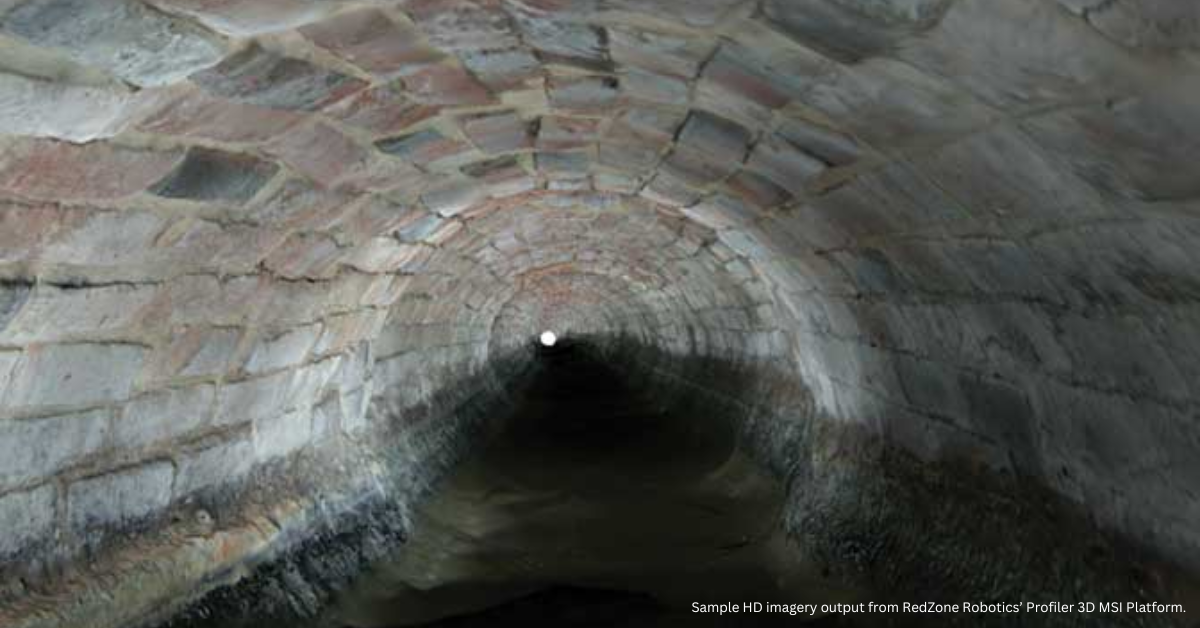
Sewer infrastructure is one of the most critical yet often overlooked components of urban development. Underground networks of pipes, manholes, and chambers facilitate wastewater management, ensuring public health and environmental safety. However, inspecting and maintaining these systems has traditionally been challenging, requiring labor-intensive and often hazardous methods.
Enter photogrammetry—a game-changing technology that is revolutionizing the way sewer inspections are conducted. By leveraging high-resolution imaging and advanced data processing, photogrammetry enables engineers and utilities to assess sewer conditions more accurately, efficiently, and safely than ever before.
In this article, we’ll explore the use of photogrammetry in sewer inspections, focusing on its application in linear sewer infrastructure as well as manholes and chambers. We’ll also highlight how RedZone Robotics, a leader in robotic sewer inspection technology, is pioneering innovative solutions in this space.
Understanding Photogrammetry in Sewer Inspections
At its core, photogrammetry is the science of extracting three-dimensional (3D) information from photographs. By capturing images from multiple angles and using automated processes to stitch them together, photogrammetry produces detailed 3D models of sewer structures.
This technology offers significant advantages over traditional sewer inspection methods, such as:
- 3D Digital Twin: Unlike purely a visual inspection, photogrammetry provides a measurable quantifiable model.
- Higher accuracy: Photogrammetry provides millimeter-level precision, enabling engineers to detect even minor defects.
- Non-contact inspection: Unlike manual entry or tethered CCTV systems, photogrammetry eliminates the need for direct human entry to the structure , enhancing safety.
- Comprehensive data collection: The resulting 3D models allow for in-depth analysis, reducing the likelihood of oversight.
- Improved efficiency: Photogrammetric inspections can be performed faster than traditional methods, leading to cost savings and minimal service disruption.
With these benefits in mind, let’s examine how photogrammetry is applied in two key areas of sewer inspection: linear sewer infrastructure and manholes/chambers.
Photogrammetry in Linear Sewer Infrastructure Inspections
Linear sewer infrastructure refers to the underground network of pipelines that transport wastewater from homes, businesses, and industrial facilities to treatment plants. Inspecting these pipes is crucial to preventing failures that could lead to sinkholes, sewage overflows, and costly repairs.
Challenges in Linear Sewer Inspections
Historically, sewer inspections have relied on closed-circuit television (CCTV) systems. While CCTV provides real-time footage of pipe interiors, it has limitations:
- Lack of precise measurements: Standard CCTV does not generate accurate spatial data, making it difficult to quantify defects.
- Operator dependency: The effectiveness of CCTV inspections depends on the skill of the operator interpreting the video.
- Limited field of view: Fixed-angle cameras may not capture the entire pipe circumference, increasing the risk of missing critical issues.

How Photogrammetry Improves Pipe Inspections
Photogrammetry overcomes these limitations by generating 3D digital twins of sewer pipes. This allows engineers to measure defects, analyze structural integrity, and simulate potential failure scenarios.
Some key advantages include:
- Automated defect detection: AI-powered software can analyze photogrammetric models to identify cracks, deformations, and leaks with minimal human input.
- Comprehensive visualization: Engineers can rotate, zoom, and manipulate the 3D model to inspect all angles of the pipe interior.
- Baseline comparisons: Photogrammetric data can be archived and compared over time to track infrastructure deterioration.
- Bend modeling: Understand the pipe’s location and geometry, without relying on historic as-built drawings
RedZone Robotics: Leading the Way in Sewer Pipe Photogrammetry
RedZone Robotics is at the forefront of integrating photogrammetry into sewer inspections. Our Solo® and Responder® robots are equipped with high-resolution cameras and LiDAR sensors that capture precise 3D imagery of sewer pipelines.
Key features of RedZone’s robotic solutions include:
- Multi-sensor technology: Combining photogrammetry with LiDAR and sonar enables comprehensive defect detection in both dry and submerged pipes.
- Cloud-based analysis: Data from RedZone’s robots is uploaded to cloud platforms, allowing engineers to conduct remote inspections and make informed maintenance decisions.
By leveraging photogrammetry, RedZone Robotics is transforming sewer pipeline inspections from reactive maintenance to predictive asset management, helping utilities extend the lifespan of their infrastructure.
Photogrammetry in Manhole and Chamber Inspections
While sewer pipelines form the backbone of wastewater systems, manholes and chambers serve as access points for maintenance and ventilation. These structures also require regular inspections to prevent failures such as structural collapses and infiltration of groundwater.
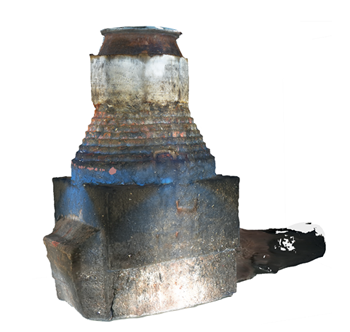
Challenges in Manhole and Chamber Inspections
Traditional manhole inspections involve manual entry or pole-mounted cameras. Both methods come with drawbacks:
- Safety risks: Confined space entry exposes workers to hazardous gases and unstable structures.
- Limited visibility: Pole cameras may not capture intricate details of the chamber’s interior.
- Time-consuming process: Manual inspections require extensive setup and personnel, increasing operational costs.
How Photogrammetry Enhances Manhole and Chamber Assessments
Photogrammetry revolutionizes manhole and chamber inspections by generating high-fidelity 3D models that capture every structural detail. This approach provides:
- Accurate volumetric measurements: Engineers can assess sediment buildup, wall degradation, and joint misalignments with millimeter precision.
- Remote analysis capability: 3D models allow off-site experts to conduct virtual inspections without entering the confined space.
- Predictive maintenance insights: By comparing historical models, utilities can anticipate degradation trends and schedule proactive repairs.
RedZone Robotics and Advanced Manhole Inspections
RedZone Robotics is also pioneering photogrammetry for manhole and chamber assessments through its Vertue™ robotic system.
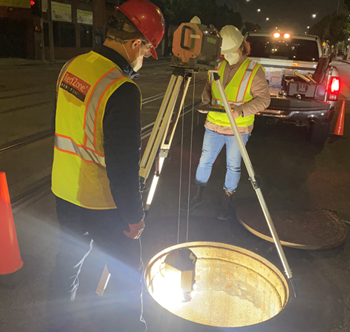
Key benefits of Vertue™ include:
- 360-degree imaging: The system captures full-dome imagery of manholes, eliminating blind spots.
- Automated defect classification: AI-driven analysis categorizes defects, prioritizing critical repairs.
- Rapid deployment: Manhole inspections can be completed in minutes, reducing traffic disruptions and operational costs.
With RedZone Robotics leading the charge, utilities now have access to fast, safe, and data-driven methods for inspecting manholes and chambers, significantly enhancing overall sewer network resilience.
The Future of Sewer Inspections with Photogrammetry
The integration of photogrammetry into sewer inspections represents a major leap forward for the industry. With advancements in robotic automation, AI-powered analytics, and cloud-based data processing, sewer management is becoming more efficient, predictive, and cost-effective.
Looking ahead, we can expect:
- Greater adoption of AI: Automated defect recognition will further reduce manual inspection workloads.
- Integration with GIS systems: Photogrammetric sewer models will seamlessly integrate into Geographic Information Systems (GIS) for enhanced infrastructure planning.
- Increased regulatory adoption: Municipalities and utilities will incorporate photogrammetric inspections into compliance frameworks, ensuring more proactive maintenance.
- Digital Twin creation: Collect information to allow a digital twin of the network to be built for hydraulic modeling, future consequence of failure studies or construction purposes.
With leaders like RedZone Robotics pushing the boundaries of sewer inspection technology, the industry is on track to transition from traditional, labor-intensive inspections to high-tech, data-driven asset management.
In short, photogrammetry isn’t just changing how we inspect sewers—it’s redefining how we manage them for the future.
Final Thoughts
Sewer infrastructure may be out of sight, but it should never be out of mind. By embracing photogrammetry, municipalities and utilities can ensure long-term asset integrity, cost savings, and environmental protection.
And with cutting-edge solutions from RedZone Robotics, the future of sewer inspections has never looked clearer—literally and figuratively.



